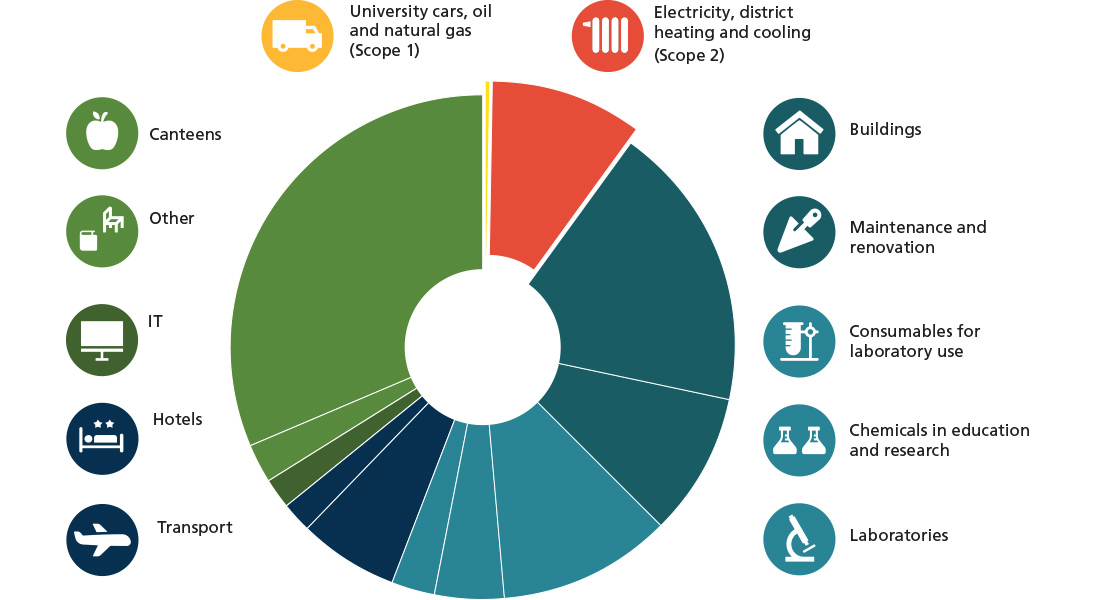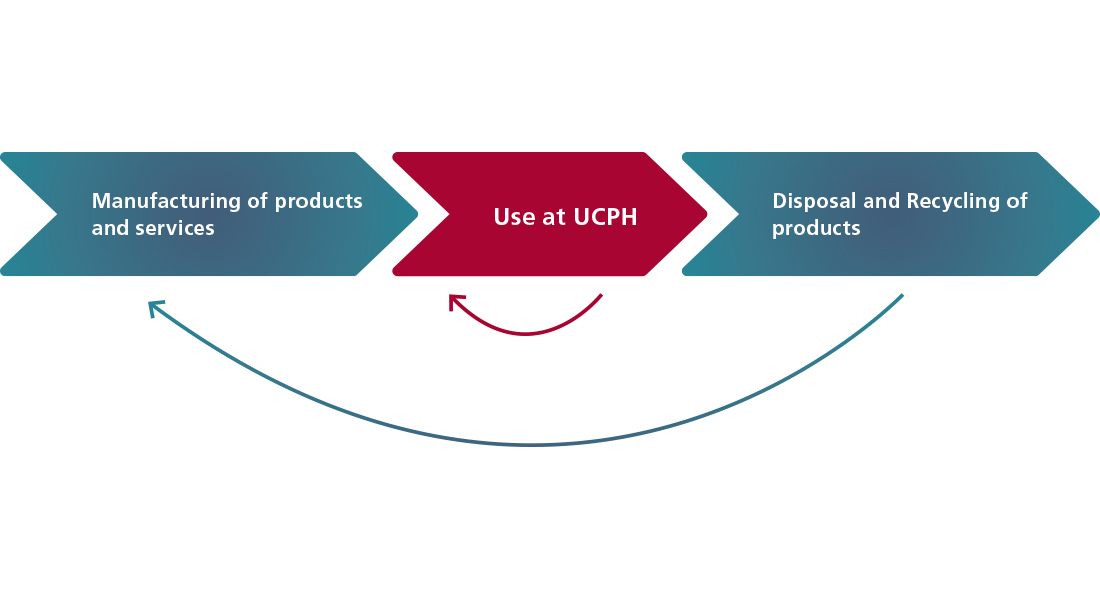
Green acceleration: Climate footprint to be reduced by half
The University of Copenhagen’s ambitious new sustainability goals are to halve its climate and resource footprint by 2030. This will be done through sustainable procurement, more efficient use of buildings, less harmful chemistry and more recycling, among other things.

The University of Copenhagen is the size of a large provincial town and leaves a significant footprint on the environment. For more than a decade, the University has been working to reduce energy consumption on campus and among staff and students. Until now, this has resulted in a reduction in CO2 emissions from energy consumption by 71 percent per full-time equivalent. But the effort does not end here. The University will continue its ambitious climate and environmental effort on an even broader and more complex scale.
“UCPH now expands its sustainability perspective. The University's impact on the climate does not only come from our own energy consumption, but also from suppliers’ emissions and waste management around UCPH. There is a large climate and resource footprint associated with the production, distribution and recycling of facilities, equipment and products for use in our laboratories, for example,” University Director Jesper Olesen says.

Turning down the heat is not enough
Approximately half of the University's climate footprint is related to its buildings and laboratories. That is why these areas are central to the initiatives going forward. This also means that climate and sustainability will be the framework for the work on the new campus plans in the coming years. Simply turning down the heat on an individual radiator is not enough.
Energy consumption must continue to be kept low, and the procurement policy is to get a sustainability upgrade. From now on, the University will take responsibility for resources used – from procurement to disposal.
 For example, this applies to the approx. 600 particularly energy-intensive freezers located in laboratories across the University. In the future and in addition to setting requirements for energy emissions, the focus will also be on the climate footprint and use of chemistry associated with both the production and disposal of freezers.
For example, this applies to the approx. 600 particularly energy-intensive freezers located in laboratories across the University. In the future and in addition to setting requirements for energy emissions, the focus will also be on the climate footprint and use of chemistry associated with both the production and disposal of freezers.
Fewer climate-impacting materials
But sustainable procurement is not the only way to reduce climate footprint. The University of Copenhagen must also use fewer climate-impacting materials and products.
A major key to reducing consumption is increased shared use of areas, facilities and equipment. Here, the University's researchers are to help develop solutions, so a reduced resource consumption goes hand in hand with better research and education.
Reducing the overall climate footprint is a complex and demanding task in which answers and solutions are not available as off-the-shelf packages, and developing and adjusting the efforts in the years to come will be a major task.
“At UCPH, there is strong desire to act sustainably among management, students and staff. This is extremely positive. However, responsibility should not lie entirely with the individual – as a university, we need to establish a sustainable framework that supports the individual's behaviour,” Prorector Bente Merete Stallknecht says.
A significantly higher gear
UCPH is facing a major task. Now the University will begin work on the new, specific sustainability initiatives that will make the University accelerate into a significantly higher green gear in the coming years. The entire organisation is to contribute to these initiatives.
“We want to establish a framework that can involve all students and staff in specific initiatives to build a more sustainable UCPH,” says Prorector Bente Merete Stallknecht.
1. Climate
2. Resources and recycling
3. Chemistry
4. Biodiversity
5. Involvement, participation and behaviour
6. Collaboration and global knowledge sharing

